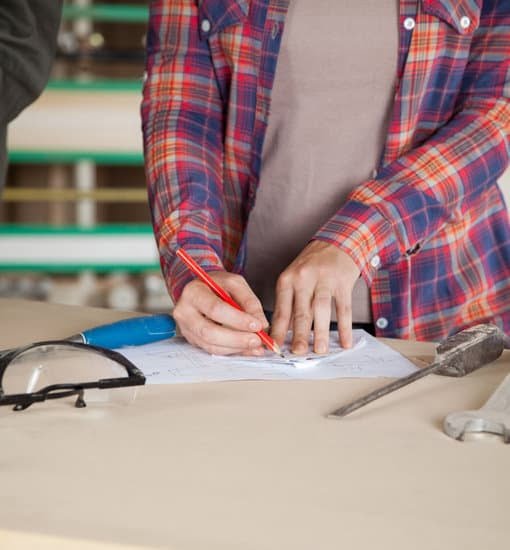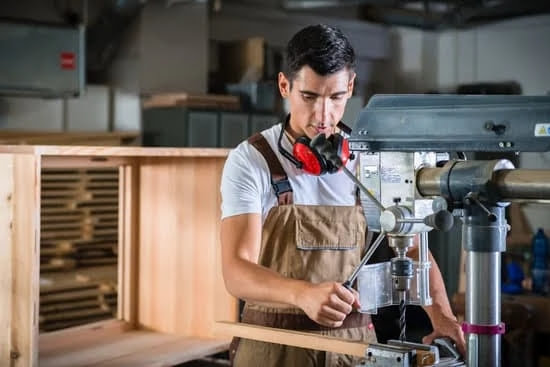Woodworking requires precision and accuracy, and one of the key tools for achieving this is a straight edge. In this article, we will explore the importance of straight edges in woodworking and how to make a straight edge with a clamp. A straight edge with a clamp is an essential tool for ensuring that your woodworking projects are perfectly aligned and accurately cut.
To start, it’s important to understand the basics of clamps for woodworking. Whether you are a novice or an experienced woodworker, having a good understanding of different types of clamps and their uses is crucial for creating precise and professional-looking woodwork. The right clamp can make all the difference in securing your straight edge firmly in place while you work.
Selecting the right materials for making a straight edge with a clamp is also vital in ensuring its effectiveness in your woodworking projects. From sturdy wood to reliable metal fastenings, choosing high-quality materials will contribute to the durability and accuracy of your homemade woodworking tool. Follow along as we provide a step-by-step guide on building and assembling the ideal straight edge with clamp tailored specifically to your needs as a woodworker.
Understanding the Basics of Clamps for Woodworking
When it comes to woodworking, having the right tools and equipment is crucial for achieving precision and accuracy in your projects. One important tool that every woodworker should have in their arsenal is a high-quality clamp.
Clamps are essential for holding pieces of wood securely in place, allowing you to work with stability and safety. There are various types of clamps available, including bar clamps, pipe clamps, C-clamps, and quick-grip clamps, each with its own unique application in woodworking.
To make a straight edge with a clamp for woodworking, it’s important to understand the different types of clamps and how they can be used effectively. For example, bar clamps are ideal for creating straight edges because they provide even pressure along the length of the workpiece.
Quick-grip clamps, on the other hand, are great for holding smaller pieces together while glue dries. By understanding the basics of clamps and their specific functions, you can choose the right type of clamp for building a straight edge.
Another key factor to consider when making a straight edge with a clamp for woodworking is selecting the right materials. You will need a sturdy and straight piece of wood as well as a high-quality clamp that can provide sufficient pressure without damaging the wood. Additionally, using non-slip padding on the clamp jaws can help prevent any marring or damage to the wood surface during use.
| Types of Clamps | Application |
|---|---|
| Bar Clamps | Ideal for creating straight edges due to even pressure |
| Quick-Grip Clamps | Great for holding smaller pieces together during gluing |
Selecting the Right Materials for Making a Straight Edge With Clamp
When it comes to creating a straight edge with a clamp for woodworking, selecting the right materials is crucial in ensuring a precise and accurate result. The key materials you will need for this project include a straight piece of lumber, a suitable clamp, wood screws, and a measuring tape.
First and foremost, the piece of lumber you choose should be straight and free from any warps or twists. A common choice for this purpose is usually a hardwood such as oak or maple, as they are sturdy and less likely to bow over time. Additionally, the length of the lumber should be based on the maximum width of the wood pieces you typically work with.
In terms of clamps, you’ll want to select one that is sturdy enough to hold the straight edge firmly in place without shifting during use. For woodworking projects, bar clamps are often recommended due to their reliability and strength. It’s important to ensure that the clamp has enough pressure to hold the straight edge securely against the surface of your workpiece.
Lastly, wood screws of an appropriate size will be needed to attach the clamp securely to the piece of lumber. These screws should be long enough to penetrate through both the clamp and the lumber without poking out on the other side. An electric drill can be used for an efficient installation process.
| Material | Recommended Options |
|---|---|
| Straight Piece of Lumber | Oak or Maple |
| Clamp | Bar Clamp |
| Wood Screws | Appropriate size based on thickness of lumber and clamp. |
Step-by-Step Guide on Building and Assembling the Straight Edge With Clamp
Building a straight edge with a clamp for woodworking is an essential skill to master, as it ensures that your projects are precise and accurate. This step-by-step guide will walk you through the process of creating and assembling your own straight edge with a clamp, enabling you to tackle woodworking projects with confidence and precision.
Gather the Necessary Materials
Before you begin constructing your straight edge with a clamp, it’s important to gather all the necessary materials. You will need a sturdy and straight piece of wood, preferably hardwood, that will serve as the straight edge. Additionally, you will need a quality woodworking clamp that is capable of securing the straight edge firmly in place during use.
Prepare the Straight Edge
Once you have selected the appropriate piece of wood for your straight edge, it’s crucial to ensure that it is perfectly straight. Use a reliable measuring tool, such as a combination square or level, to verify that the wood is flat and true along its entire length. If necessary, make any adjustments to the wood by planing or sanding until it meets your precision standards.
Assemble the Clamp
After preparing the straight edge, it’s time to assemble the clamp that will secure it during use. Position the woodworking clamp along the length of the straight edge and mark where you will need to drill holes for installation. Carefully drill holes in both the straight edge and clamp, ensuring that they align perfectly for a secure fit. Once drilled, attach the clamp securely to the straight edge using appropriate hardware and fasteners.
By following these steps, you can create your own homemade straight edge with a clamp for woodworking, empowering you to achieve accuracy and precision in all of your woodworking endeavors.
Tips and Techniques for Ensuring Accuracy and Precision in Woodworking Projects
Once you have built and assembled your straight edge with a clamp for woodworking, it is important to ensure that you use it correctly to achieve accuracy and precision in your projects. Here are some tips and techniques to help you make the most of your homemade straight edge with clamp:
Tips for Ensuring Accuracy and Precision:
1. Measure Twice, Cut Once: Before making any cuts, always double-check your measurements to avoid any mistakes.
2. Secure the Workpiece: Use clamps to secure your workpiece firmly to the work surface, ensuring that it does not move while you are making your cuts.
3. Use Proper Marking Tools: Mark your cutting lines accurately using a sharp pencil or a marking knife to ensure precise cuts.
Techniques for Achieving Precision:
– When using the straight edge with clamp for making rip cuts, ensure that the edge of the straight edge is aligned perfectly with the cutting line before clamping it down securely.
– For crosscuts, use a square or a miter gauge along with the straight edge to ensure perpendicular cuts.
Remember, practicing these tips and techniques will help you achieve accurate and precise results in your woodworking projects.
Common Mistakes to Avoid:
By following these tips and techniques and avoiding common mistakes, you can make the most out of your homemade straight edge with clamp for woodworking. With practice, you will be able to achieve professional-level precision in your woodworking projects.
Common Mistakes to Avoid When Using a Straight Edge With Clamp
When it comes to using a straight edge with a clamp in woodworking, there are some common mistakes that can easily be made if not careful. Avoiding these mistakes is crucial in ensuring the accuracy and precision of your woodworking projects.
Incorrect Placement of Clamp
One common mistake when using a straight edge with a clamp is placing the clamp in the wrong position. It’s important to ensure that the clamp is positioned securely and evenly along the entire length of the straight edge. Failure to do so can result in an uneven cutting or shaping of the wood, leading to inaccuracies in your project.
Using Worn or Damaged Materials
Another mistake to avoid is using worn or damaged materials when making a straight edge with a clamp. Using warped or damaged wood for the straight edge can lead to inaccuracies and inconsistencies in your measurements and cuts. Similarly, using a worn or damaged clamp can result in uneven pressure distribution, causing the straight edge to shift during use.
Not Double-Checking Alignment and Measurement
One of the most crucial mistakes to avoid is not double-checking the alignment and measurement of your straight edge before securing it with a clamp. Even the slightest misalignment or miscalculation can lead to major inaccuracies in your woodworking project. Always double-check your measurements and ensure that the straight edge is aligned properly before clamping it down for use.
By being aware of these common mistakes and taking proactive measures to avoid them, you can ensure that your woodworking projects are as accurate and precise as possible when using a homemade straight edge with a clamp.
Alternative Methods for Creating Straight Edges in Woodworking
When it comes to creating straight edges in woodworking, using a homemade straight edge with a clamp is just one of the many methods available. Here are some alternative methods that woodworkers can consider:
- Circular Saw Guide: Using a circular saw guide is an effective way to create straight edges in woodworking. This method involves attaching a straight piece of wood or metal to the workpiece, allowing the circular saw to follow along and cut a perfectly straight edge.
- Router Guide: Another alternative method for creating straight edges is using a router guide. This involves attaching a router to a piece of wood or metal that acts as a straight edge, allowing the user to run the router along the edge and create a perfectly straight cut.
- Track Saw System: A track saw system is another popular method for creating straight edges in woodworking. This system features a track that guides the saw along the workpiece, ensuring precise and accurate cuts every time.
Each of these alternative methods has its own advantages and disadvantages, so it’s essential for woodworkers to evaluate which method best suits their needs based on the project at hand. Experimenting with different techniques can also help determine which method works best for specific woodworking tasks.
Conclusion
In conclusion, creating a homemade straight edge with clamp for woodworking provides woodworkers with a practical and cost-effective solution for achieving accurate and precise cuts. By understanding the basics of clamps and selecting the right materials, woodworkers can easily build and assemble their own straight edge with clamp. This DIY tool not only allows for greater control and consistency in woodworking projects but also helps in avoiding common mistakes that may arise when using commercial straight edges.
One of the benefits of using a homemade straight edge with clamp is the customization it offers. Woodworkers have the flexibility to create straight edges of various lengths to accommodate different project requirements. Additionally, this DIY tool can be easily adjusted and modified to suit specific woodworking needs, providing a level of versatility that may not be available with store-bought options.
Furthermore, by following tips and techniques for ensuring accuracy and precision, woodworkers can elevate the quality of their work while minimizing errors. The homemade straight edge with clamp serves as a reliable guide for making clean and straight cuts, ultimately contributing to the overall success of woodworking projects. With proper care and maintenance, this DIY tool can be a valuable asset in any woodworker’s toolkit.
Frequently Asked Questions
How Do You Make Straight Edge Woodworking?
Straight edge woodworking requires precision and accuracy to ensure that the edges of the wood are perfectly straight. This can be achieved using tools such as a jointer or a table saw to carefully trim and align the edges of the wood.
It is important to measure and mark the wood accurately before making any cuts, and to use a steady hand when operating the tools.
What Is a Straight Edge Clamp?
A straight edge clamp is a tool used in woodworking to hold a straight edge firmly in place while cutting or shaping wood. This type of clamp is designed to prevent the straight edge from moving or shifting during the woodworking process, ensuring that the cuts or shaping are done with precision and accuracy.
Straight edge clamps come in various sizes and designs, but they all serve the same purpose of keeping the straight edge securely positioned.
How Do You Straighten Wood Edges?
Wood edges can be straightened by using tools such as hand planes, jointers, or routers. These tools allow woodworkers to carefully remove any uneven or jagged areas along the edges of the wood, resulting in a perfectly straight edge.
It is important to work slowly and methodically when straightening wood edges, checking for accuracy as you go along to ensure that each edge is perfectly aligned and smooth.

Hi everyone! I’m a woodworker and blogger, and this is my woodworking blog. In my blog, I share tips and tricks for woodworkers of all skill levels, as well as project ideas that you can try yourself.





